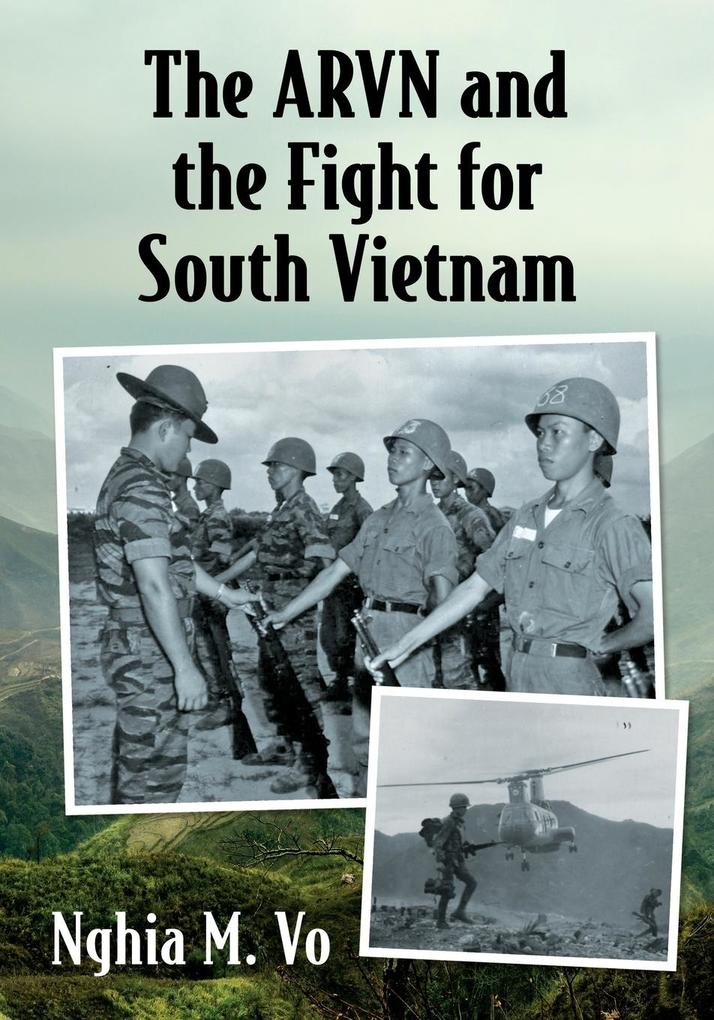
Zustellung: Sa, 14.06. - Mi, 18.06.
Versand in 6 Tagen
VersandkostenfreiBestellen & in Filiale abholen:
With the withdrawal of French forces from South Vietnam in 1955, the U. S. took an ever-widening role in defending the country against invasion by North Vietnam. By 1965, the U. S. had ""Americanized"" the war, relegating the Army of the Republic of Vietnam (ARVN) to a supporting role. While the U. S. won many tactical victories, it had difficulty controlling the territory it fought for. As the war grew increasingly unpopular with the American public, the North Vietnamese launched two large-scale invasions in 1968 and 1972--both tactical defeats but strategic victories for the North that precipitated the U. S. policy of ""Vietnamization,"" the drawdown of American forces that left the ARVN to fight alone.
This book examines the maturation of the ARVN, and the major battles it fought from 1963 to its demise in 1975. Despite its flaws, the ARVN was a well-organized and disciplined force with an independent spirit and contributed enormously to the war effort. Had the U. S. ""Vietnamized"" the war earlier, it might have been won in 1967-1968.
This book examines the maturation of the ARVN, and the major battles it fought from 1963 to its demise in 1975. Despite its flaws, the ARVN was a well-organized and disciplined force with an independent spirit and contributed enormously to the war effort. Had the U. S. ""Vietnamized"" the war earlier, it might have been won in 1967-1968.
Inhaltsverzeichnis
Table of Contents
Introduction: The Life and Death of the ARVN
1. From the National Army to the ARVN
2. 1963: The p B c Battle
3. 1964: The Bình Giã Battle
4. 1965: Sông Bé, Ð ng Xoài, Bà Giã, Thün Man, Plei Me
5. 1966: The South Vietnamese Economy
6. 1967: The Year of Decision
7. 1968: The T t Offensive, Saigon, Hü, the Hü Massacre
8. 1969: Vietnamization, Hamburger Hill
9. 1970-71: Cambodian and Laotian Incursions
10. 1972: Qüng Tr -Kontum-An L c-Charlie
11. 1973: Nguy n Vãn Thi u's Four Wars
12. 1974: The Paracel Islands, Thý ng Ð c, Phý c Long
13. 1975: Ban Mê Thüt, the Fall of I Corps, Phan Rang, Xuân L c
14. Self Sacrifice, Reeducation Camps, Postwar Killings
15. Identity
Epilogue
Glossary
Appendix I-List of Vietnamese Reeducation Camps
Chapter Notes
Bibliography
Index
Introduction: The Life and Death of the ARVN
1. From the National Army to the ARVN
2. 1963: The p B c Battle
3. 1964: The Bình Giã Battle
4. 1965: Sông Bé, Ð ng Xoài, Bà Giã, Thün Man, Plei Me
5. 1966: The South Vietnamese Economy
6. 1967: The Year of Decision
7. 1968: The T t Offensive, Saigon, Hü, the Hü Massacre
8. 1969: Vietnamization, Hamburger Hill
9. 1970-71: Cambodian and Laotian Incursions
10. 1972: Qüng Tr -Kontum-An L c-Charlie
11. 1973: Nguy n Vãn Thi u's Four Wars
12. 1974: The Paracel Islands, Thý ng Ð c, Phý c Long
13. 1975: Ban Mê Thüt, the Fall of I Corps, Phan Rang, Xuân L c
14. Self Sacrifice, Reeducation Camps, Postwar Killings
15. Identity
Epilogue
Glossary
Appendix I-List of Vietnamese Reeducation Camps
Chapter Notes
Bibliography
Index
Produktdetails
Erscheinungsdatum
26. August 2021
Sprache
englisch
Seitenanzahl
270
Autor/Autorin
Nghia M. Vo
Verlag/Hersteller
Produktart
kartoniert
Gewicht
514 g
Größe (L/B/H)
254/178/15 mm
ISBN
9781476685854
Entdecken Sie mehr
Bewertungen
0 Bewertungen
Es wurden noch keine Bewertungen abgegeben. Schreiben Sie die erste Bewertung zu "The ARVN and the Fight for South Vietnam" und helfen Sie damit anderen bei der Kaufentscheidung.









